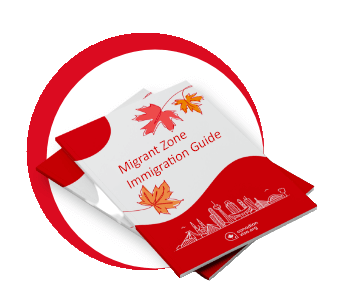
When starting your journey to Canada, ensuring you're adequately prepared for your arrival is vital. Adequate preparation can make all the difference to your experience in Canada. Often, we recommend having a professional help you prepare, as they can pick up on aspects of Canada that you may overlook.
As one of the world's largest and most developed countries, Canada is home to some of the best banks offering a wide range of financial services. Canadian banks are known for their reliability, stability, and customer service, from savings, accounts to credit cards, loans, and more. However, choosing the right bank in Canada can be overwhelming, especially for newcomers. This comprehensive guide will take you through the top banks in Canada, factors to consider when choosing a bank, and how to set up your bank account in Canada.
Canada's banking system is one of the most stable and secure in the world, regulated by the Office of the Superintendent of Financial Institutions (OSFI). This federal agency oversees all financial institutions operating in Canada. The country has five major banks, also known as the "Big Five," which dominate the Canadian banking industry. These banks include the Royal Bank of Canada (RBC), Toronto-Dominion Bank (TD), Bank of Nova Scotia (Scotiabank), Bank of Montreal (BMO), and Canadian Imperial Bank of Commerce (CIBC).
Royal Bank of Canada

Founded in 1864, RBC is the largest bank in Canada by market capitalization and the fifth-largest bank in North America. RBC offers various financial products and services, including personal and commercial banking, wealth management, insurance, and investment banking. The bank has over 17 million clients worldwide and operates in over 36 countries. RBC is known for its exceptional customer service, innovative products, and its commitment to social responsibility.
RBC offers a variety of savings accounts, including high-interest and tax-free ones. The bank also offers credit cards, personal loans, mortgages, and investment options such as mutual funds and GICs. In addition, RBC's online banking platform is user-friendly and allows customers to manage their finances from anywhere.
RBC suits individuals and businesses looking for a reliable, established financial institution with a global presence.
RBC operates in 29 countries and has a separate corporate entity affiliated with the Royal Bank of Canada. RBC offers digital banking services, which allow customers to manage their finances from anywhere. Therefore, those looking for a bank with a wide range of account options, global presence, and digital banking services may consider RBC.
Toronto-Dominion Bank

The Toronto-Dominion Bank, commonly known as TD, is a Canadian multinational banking and financial services corporation. It was created on February 1, 1955, through the merger of the Bank of Toronto and The Dominion Bank, founded in 1855 and 1869, respectively. TD Bank is headquartered in Toronto, Canada, with over 90,000 employees worldwide. It is one of the Big Five banks of Canada, ranking as the second-largest bank in terms of assets, trailing only RBC Financial Group.
TD Bank provides retail and corporate banking, wealth management, and related financial solutions. It offers a full range of financial products and services to over 27 million customers worldwide through three key business lines: Canadian Retail, U.S. Retail, and Wholesale Banking. It's Canadian Personal and Commercial Banking segment offers a full range of financial products and services to approximately 15 million customers in the Bank’s personal and commercial banking businesses in Canada.
Its U.S. Retail segment offers a range of financial products and services under TD Bank, America’s Most Convenient Bank. TD Bank also offers wealth management and insurance protection to approximately six million customers in Canada.
Who Should Bank With Them?
As the second-largest bank in Canada in terms of assets, TD Bank is suitable for individuals and businesses looking for a reliable and established financial institution.
TD Bank also provides wealth management and related financial solutions.
Therefore, individuals and businesses looking for investment and wealth management services can also consider TD Bank. However, it is important to note that TD Bank operates in North America, so there may be better options for those looking for a bank with a global presence.
Bank of Nova Scotia

The Bank of Nova Scotia, or Scotiabank, is a Canadian multinational banking and financial services company headquartered in Toronto, Ontario.
It is the third-largest Canadian bank by deposits and market capitalization.
Scotiabank provides financial products and services to many customers in Canada and worldwide, including personal, commercial, corporate, and investment banking.
It has established itself as Canada's most international bank through extensive operations throughout Latin America, the Caribbean, Central America, and Asia.
Who Should Bank With Them?
Individuals and businesses looking for banking services in Canada, Mexico, or the Caribbean may consider the Bank of Nova Scotia as an option. Scotiabank serves a huge volume of customers and has many branches, offices, and ATMs to serve its customers. It is also a good option for those looking for a bank with diversified platforms providing sustainable revenue growth.
Bank of Montreal

BMO is the fourth-largest bank in Canada by market capitalization and the twelfth-largest bank in North America. The bank has over 12 million customers worldwide and operates in over seven countries. BMO offers various financial products and services, including personal and commercial banking, wealth management, insurance, and investment banking.
Who Should Bank With Them?
BMO offers various products and services, including several types of accounts, lending products, investment platforms, and more.
It is a practical choice for anyone who wants to keep their financial accounts in one place and manage their finances on the go through its online and mobile banking platforms.
BMO Bank is great for people with kids and those who like to travel, as it offers attractive perks, lower fees, and better interest rates. It is also a good option for those who want to bank with one of the biggest banks in Canada, as it offers a wide variety of products, services, and solutions to meet customers' needs across various sectors.
Canadian Imperial Bank of Commerce

CIBC is the fifth-largest bank in Canada by market capitalization and the fourteenth-largest bank in North America. The bank has over 11 million customers worldwide and operates in over 20 countries. It was formed through a merger between the Canadian Bank of Commerce and the Imperial Bank of Canada in 1961, creating the largest bank in Canada, with over 1,200 branches nationwide. CIBC offers various financial products and services, including personal banking, business banking, investment banking, and wealth management.
CIBC offers a variety of savings accounts, including high-interest and tax-free ones. The bank also offers credit cards, personal loans, mortgages, and investment options such as mutual funds and GICs. CIBC's online banking platform is user-friendly and offers customers a variety of features such as online bill payments, money transfers, and account management tools.
Who Should Bank With Them?
It is a good option for those looking for a full-service financial institution with a wide range of account options, credit cards, investment options, and insurance products. CIBC is also committed to sustainability and responsible financing and investing, making it a good option for those looking for a bank focusing on environmental issues and concerns.
Choosing the right bank may also have something to do with the part of Canada you will be living in. If you're unsure where in Canada is right for you, you could massively benefit from the services of a Canadian immigration professional like a Regulated Canadian Immigration Consultant (RCIC). An RCIC can fully evaluate you to determine where in Canada the best opportunities for you are.
How to Choose a Bank

Choosing the right bank in Canada can be overwhelming, especially for newcomers. Here are some factors to consider when choosing a bank:
Fees
Banks in Canada charge fees for various services, including ATM withdrawals, overdraft fees, and monthly account fees. It's essential to compare the fees charged by different banks and choose a bank that offers affordable fees.
Interest Rates
Interest rates on savings accounts and loans vary from bank to bank. Therefore, comparing different banks' interest rates and choosing a competitive bank is essential.
Customer Service
Customer service is crucial when choosing a bank. You want to choose a bank that offers exceptional customer service and is responsive to your needs.
Location
The bank's location is also an essential factor to consider. You want to choose a bank with branches and ATMs near you.
How to Set Up Your Bank Account in Canada

Setting up a bank account in Canada is a straightforward process. Here are the steps to follow:
Choose a Bank
Research the different banks in Canada and choose one that best fits your needs.
Gather Your Documents
You must provide identification, such as a passport or driver's license, and proof of address, such as a utility bill.
Visit a Branch
Visit a branch of your chosen bank and speak to a customer service representative. They will guide you through the account opening process and answer any questions.
Make a Deposit
Once your account is open, you can deposit to use your bank account.
FAQs
Can I Open a Bank Account in Canada as a Non-resident?
Yes, non-residents can open a bank account in Canada. However, you will need to provide identification and proof of address.
Are Canadian Banks Insured?
Canadian banks are insured by the Canada Deposit Insurance Corporation (CDIC), which provides insurance for deposits up to $100,000.
Choosing the Right Bank for Your Needs
Choosing the right bank in Canada is essential to meet your financial needs. With the top banks in Canada, you can be sure of reliability, stability, and customer service. Consider fees, interest rates, customer service, and location when choosing a bank. To set up your bank account in Canada, choose a bank, gather your documents, visit a branch, and make a deposit. Doing all of this will help you start your new life in Canada on the right foot.
However, before you arrive in Canada, you must navigate the immigration process correctly—one of the best ways to do this is to utilize the experience and expertise of an RCIC. The job of an RCIC is to educate their clients and provide immigration options specifically tailored to each client's needs. They also handle all the paperwork and ensure all documents are submitted correctly.
Talk to an RCIC to see how to start your journey to Canada.




